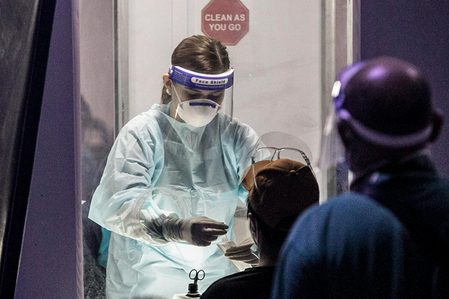SUMMARY
This is AI generated summarization, which may have errors. For context, always refer to the full article.
![[ANALYSIS] Why it’s time to open borders](https://www.rappler.com/tachyon/2020/10/tl-green-lane.jpg)
The Inter-Agency Task Force for the Management of Emerging Infectious Diseases (IATF) announced last week that it would be allowing foreign nationals with business interests to enter the Philippines from 1 November. Although this “green lane” for limited business travel is a welcome development, much more can be done to ease border restrictions to revive an ailing economy, without risking health.
With the exception of China, where the first COVID-19 cases were identified in late 2019, every other country, including the Philippines, closed its borders to international travel before introducing domestic restrictions. This made sense during the early phase of the pandemic, as countries tried to insulate themselves from a rapidly spreading virus. The need to manage borders so strictly is no longer applicable, especially when community transmission is present. With more than 370,000 reported infections as of late October, there are only 19 countries in the world that have a higher number of infections than the Philippines.
The Philippines has been easing domestic restrictions at a faster rate than international ones. The nub of this is straightforward: the asymmetry in treatment of national and international movement is no longer justified; narrowing it could deliver economic benefits without significantly raising health risks.
Even for countries that are trying to eliminate the virus, as opposed to managing community spread like the Philippines, current border restrictions appear extreme. In theory, so long as capacity exists for testing and quarantine, there is no need to restrict travel to any particular group or country. In practice, after allowing for uncertainty and the risk of non-compliance, the Philippines could consider opening up to countries that have controlled community spread. These visitors are also more likely to practise social distancing behavior, which reduces the likelihood of contracting and spreading the virus after arrival.
The other practical issue is the capacity to test and process arrivals at airports. The Philippine Red Cross (PRC), which has conducted about a quarter of all COVID-19 tests, has recently stopped doing so because Philhealth has refused to pay arrears amounting to about US$20 million. This has forced Manila airports to reduce their arrival quota from 3000 to 2500 daily. Due to this bottleneck, asymptomatic Overseas Foreign Workers (OFWs) returning from countries with low rates of community transmission are no longer being tested or quarantined on arrival. This creates a new inconsistency in the way arrivals are treated. The government announced on 23 October that it will clear the PRC debt, so this should remove the bottleneck. Going forward, it needs to ramp up testing capacity further to process arrivals.
The fact that domestic measures are being eased despite community spread being present suggests that the government is trying to balance health risks with economic considerations. But it must go beyond selective easing such as the green lane announced last week if it wants to revive industries severely affected by prolonged international restrictions. Removing restrictions without removing or reducing quarantine requirements may still deter non-essential travel.
The Philippine government has been encouraging domestic tourism, which does not require testing or quarantine, to offset the shortfall from international arrivals. By allowing a limited amount of international tourism from countries where community transmission is under control, and with the same testing and quarantine requirements of the proposed green lane, health risks could be lower than domestic tourism required to achieve the same economic impact. Even if it were to waive or shorten the quarantine requirement to encourage tourism from these countries, as Thailand is considering doing, health risks would still be lower than domestic tourism because the latter are neither tested nor quarantined despite being drawn from a higher risk population.
The fact that government has recently waived testing and quarantine for OFWs returning from low-risk countries suggests that it is not purely health concerns that is preventing the opening to international tourism. It’s mostly politics. Politicians may fear that voters could judge a surge in infections due to easing of border restrictions on foreigners more harshly than one due to domestic easing. Crises also tend to turn countries inward to some extent, as this retreat is viewed as being more palatable, even commendable, by an anxious electorate. The fiasco involving PRC and Philhealth which has limited testing capacity may be partly responsible, but this is a recent event that is being resolved.
While keeping borders closed will reduce health risks, it comes at a high price. The IMF forecasts that the Philippines economy will contract by 8.3% this year, the highest in ASEAN. After almost a year of living with the virus and with no known date for an effective and widely available vaccine, countries must find a sustainable balance between risks to health and economy. The Philippines has been striking that balance by mainly easing domestic restrictions. Although it is beginning to ease international restrictions on select groups, it needs to do much more if it wants to revive the economy. To succeed, it also needs to ramp up its testing capacity to process the additional arrivals. Doing just one or the other will not work, and will unnecessarily delay economic recovery. – Rappler.com
Jayant Menon, Ph.D is a Visiting Senior Fellow at the ISEAS – Yusof Ishak Institute in Singapore, and former Lead Economist at the ADB. jmenon1@gmail.com
Add a comment
How does this make you feel?

There are no comments yet. Add your comment to start the conversation.